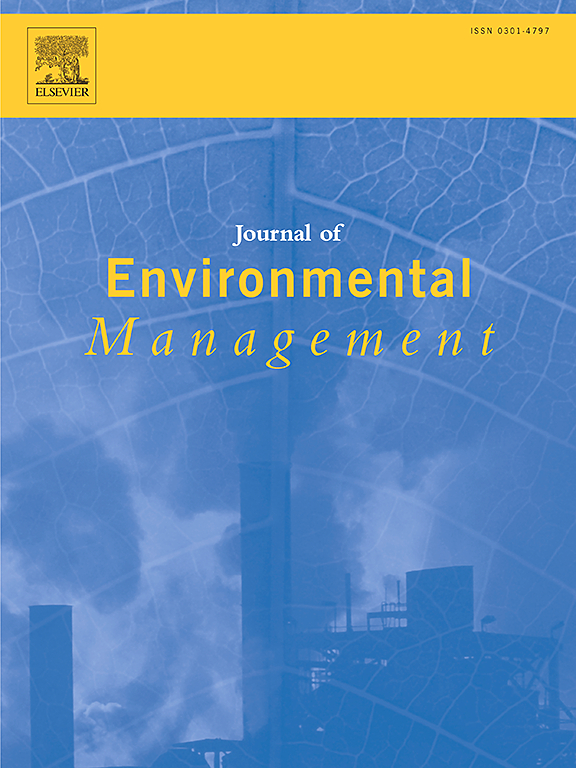A conceptual framework to inform conservation status assessments of non-charismatic species
IF 8
2区 环境科学与生态学
Q1 ENVIRONMENTAL SCIENCES
引用次数: 0
Abstract
The conservation of at-risk species is rooted in the ability of natural resource agencies to recognize when a species is imperiled and in need of regulatory action, which can be a difficult task due to incomplete information. Freshwater mussels (Bivalvia: Unionidae), are a highly imperiled group of aquatic organisms and conservation tools such as the NatureServe Conservation Methodology provide a framework to determine whether a species is in decline and in need of potential management. For data deficient species like mussels this method relies heavily on expert opinion, which can lead to biased estimates of conservation status that may not reflect the true nature of their conservation need. To address these concerns, we developed a standardized and repeatable conservation ranking framework that builds upon the established NatureServe methodology. We compiled a data set of 12,018 species occurrence records of 48 freshwater mussel species, 17 geospatial layers representing environmental threats, and life history information to estimate their response to those threats. Estimated ranks were compared to previous status ranking metrics from IUCN, NatureServe, USFWS and Texas Parks and Wildlife Department. Of the 48 species we evaluated, three were classified as critically imperiled, 16 were imperiled, 15 were vulnerable, 13 were apparently secure, and one was secure. We found 48% of species assessed were less imperiled than NatureServe estimates and found 10% of species assessed to have a higher conservation status than previous evaluations. Our approach can be applied to other species in other regions and should be useful for managers and scientists interested in reducing uncertainty and improving reproducibility in assignment of conservation ranks, particularly for those with limited information.
一个概念框架,为非狩猎物种的保护状况评估提供信息。
保护濒危物种的根本在于自然资源机构是否有能力识别一个物种何时濒临灭绝并需要采取监管行动,而由于信息不完整,这可能是一项艰巨的任务。淡水贻贝(双壳类:Unionidae)是一类濒危程度很高的水生生物,自然保护联盟(NatureServe)的保护方法等保护工具为确定一个物种是否处于衰退期以及是否需要采取潜在的管理措施提供了一个框架。对于像贻贝这样缺乏数据的物种,这种方法在很大程度上依赖于专家意见,这可能会导致对保护状况的估计存在偏差,从而无法反映其保护需求的真实性质。为了解决这些问题,我们在自然保护协会(NatureServe)既定方法的基础上,开发了一个标准化、可重复的保护排名框架。我们汇编了一套包含 48 个淡水贻贝物种的 12,018 条物种出现记录、17 个代表环境威胁的地理空间层和生活史信息的数据集,以估计它们对这些威胁的反应。估算的等级与世界自然保护联盟(IUCN)、自然保护协会(NatureServe)、美国联邦科学与技术基金会(USFWS)以及得克萨斯州公园与野生动物管理局(Texas Parks and Wildlife Department)之前的状态等级指标进行了比较。在我们评估的 48 个物种中,3 个被列为极度濒危物种,16 个为濒危物种,15 个为易危物种,13 个为明显安全物种,1 个为安全物种。我们发现,48% 的受评估物种的濒危程度低于自然保护协会的估计,10% 的受评估物种的保护状况高于之前的评估。我们的方法可应用于其他地区的其他物种,对于有兴趣减少不确定性和提高保护等级分配的可重复性的管理者和科学家来说,尤其是对于那些信息有限的物种,我们的方法应该是有用的。
本文章由计算机程序翻译,如有差异,请以英文原文为准。
求助全文
约1分钟内获得全文
求助全文
来源期刊

Journal of Environmental Management
环境科学-环境科学
CiteScore
13.70
自引率
5.70%
发文量
2477
审稿时长
84 days
期刊介绍:
The Journal of Environmental Management is a journal for the publication of peer reviewed, original research for all aspects of management and the managed use of the environment, both natural and man-made.Critical review articles are also welcome; submission of these is strongly encouraged.
 求助内容:
求助内容: 应助结果提醒方式:
应助结果提醒方式:


